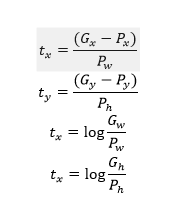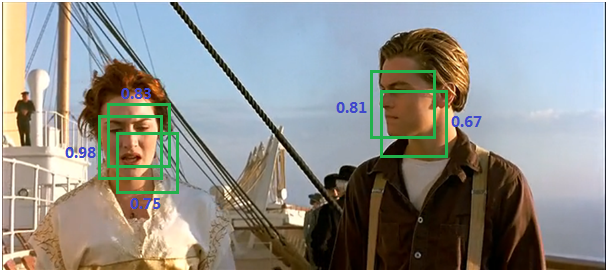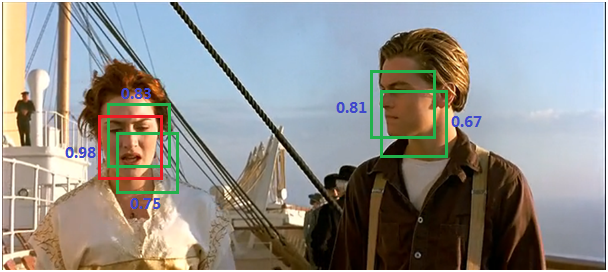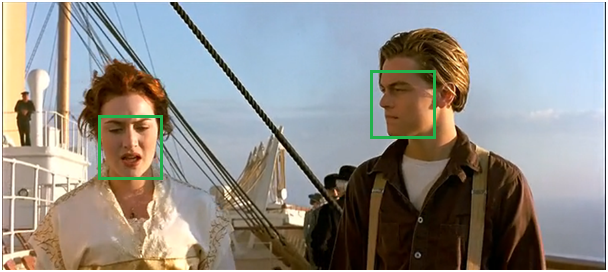RPN(RegionProposal Network)区域生成网络
Faster-RCNN的核心。在这里整理。
1.anchors。
特征可以看做一个尺度51*39的256通道图像,对于该图像的每一个位置,考虑9个可能的候选窗口:三种面积{128,256,512}×{128,256,512}×三种比例{1:1,1:2,2:1}{1:1,1:2,2:1}。这些候选窗口称为anchors。下图示出51*39个anchor中心,以及9种anchor示例。
{1282,2562,5122}×{1282,2562,5122}×三种比例{1:1,1:2,2:1}{1:1,1:2,2:1}。这些候选窗口称为anchors。下图示出51*39个anchor中心,以及9种anchor示例。
2.SOFTMAX的两支
计算每个像素256-d的9个尺度下的值,得到9个anchor,我们给每个anchor分配一个二进制的标签(前景背景)。我们分配正标签前景给两类anchor:1)与某个ground truth(GT)包围盒有最高的IoU重叠的anchor(也许不到0.7),2)与任意GT包围盒有大于0.7的IoU交叠的anchor。注意到一个GT包围盒可能分配正标签给多个anchor。我们分配负标签(背景)给与所有GT包围盒的IoU比率都低于0.3的anchor。非正非负的anchor对训练目标没有任何作用,由此输出维度为(2*9)18,一共18维。
假设在conv5 feature map中每个点上有k个anchor(默认k=9),而每个anhcor要分foreground和background,所以每个点由256d feature转化为cls=2k scores;而每个anchor都有[x, y, w, h]对应4个偏移量,所以reg=4k coordinates
补充一点,全部anchors拿去训练太多了,训练程序会在合适的anchors中随机选取128个postive anchors+128个negative anchors进行训练。
-------------------------------------------------------分割线-------------------------------------------------------------------
以上是传统的RPN,下面是Faster R-CNN 的RPN部分。
3.bounding box regression
前2.)中已经计算出foreground anchors,使用bounding box regression回归得到预设anchor-box到ground-truth-box之间的变换参数,即平移(dx和dy)和伸缩参数(dw和dh),由此得到初步确定proposal。
如图9所示绿色框为飞机的Ground Truth(GT),红色为提取的foreground anchors,那么即便红色的框被分类器识别为飞机,但是由于红色的框定位不准,这张图相当于没有正确的检测出飞机。所以我们希望采用一种方法对红色的框进行微调,使得foreground anchors和GT更加接近。

图9
缩进对于窗口一般使用四维向量(x, y, w, h)表示,分别表示窗口的中心点坐标和宽高。对于图 10,红色的框A代表原始的Foreground Anchors,绿色的框G代表目标的GT,我们的目标是寻找一种关系,使得输入原始的anchor A经过映射得到一个跟真实窗口G更接近的回归窗口G',即:给定A=(Ax, Ay, Aw, Ah),寻找一种映射f,使得f(Ax, Ay, Aw, Ah)=(G'x, G'y, G'w, G'h),其中(G'x, G'y, G'w, G'h)≈(Gx, Gy, Gw, Gh)。

图10
那么经过何种变换才能从图6中的A变为G'呢? 比较简单的思路就是:
缩进 1. 先做平移

缩进 2. 再做缩放

缩进观察上面4个公式发现,需要学习的是dx(A),dy(A),dw(A),dh(A)这四个变换。当输入的anchor与GT相差较小时,可以认为这种变换是一种线性变换, 那么就可以用线性回归来建模对窗口进行微调(注意,只有当anchors和GT比较接近时,才能使用线性回归模型,否则就是复杂的非线性问题了)。对应于Faster RCNN原文,平移量(tx, ty)与尺度因子(tw, th)如下:

(后两个公式写错了,是tw,th)
缩进接下来的问题就是如何通过线性回归获得dx(A),dy(A),dw(A),dh(A)了。线性回归就是给定输入的特征向量X, 学习一组参数W, 使得经过线性回归后的值跟真实值Y(即GT)非常接近,即Y=WX。对于该问题,输入X是一张经过卷积获得的feature map,定义为Φ;同时还有训练传入的GT,即(tx, ty, tw, th)。输出是dx(A),dy(A),dw(A),dh(A)四个变换。那么目标函数可以表示为:![]()
其中Φ(A)是对应anchor的feature map组成的特征向量,w是需要学习的参数,d(A)是得到的预测值(*表示 x,y,w,h,也就是每一个变换对应一个上述目标函数)。为了让预测值(tx, ty, tw, th)与真实值最小,得到损失函数:

函数优化目标为:
Boundingbox regression原理http://blog.csdn.net/elaine_bao/article/details/60469036
4.将预proposal利用feat_stride和im_info将anchors映射回原图,判断预proposal是否大范围超过边界,剔除严重超出边界的。
按照softmax score进行从大到小排序,提取前2000个预proposal,对这个2000个进行NMS(非极大值抑制),将得到的再次进行排序,输出300个proposal。
NMS(非极大值抑制)
由于锚点经常重叠,因此建议最终也会在同一个目标上重叠。为了解决重复建议的问题,我们使用一个简单的算法,称为非极大抑制(NMS)。NMS 获取按照分数排序的建议列表并对已排序的列表进行迭代,丢弃那些 IoU 值大于某个预定义阈值的建议,并提出一个具有更高分数的建议。总之,抑制的过程是一个迭代-遍历-消除的过程。如下图所示:
- 将所有候选框的得分进行排序,选中最高分及其所对应的BB;
图10
- 遍历其余的框,如果它和当前最高得分框的重叠面积大于一定的阈值,我们将其删除。
图11
- 从没有处理的框中继续选择一个得分最高的,重复上述过程。
框架流程:from:https://blog.csdn.net/zjucor/article/details/78232024
我的这个可以看到具体数据流动情况。
参考文献:
https://blog.csdn.net/ying86615791/article/details/72788414
https://blog.csdn.net/zjucor/article/details/78232024
https://blog.csdn.net/WZZ18191171661/article/details/79439212
RPN(RegionProposal Network)区域生成网络











